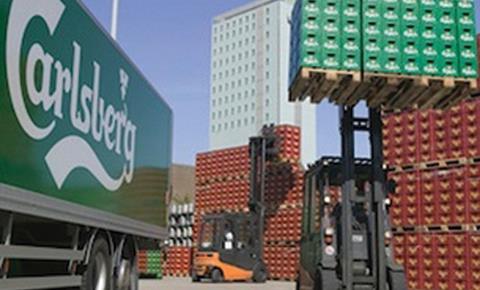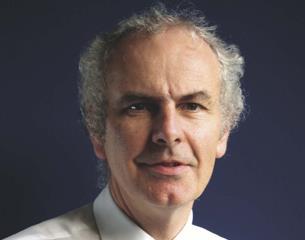
If you read nothing else, read this…
- Total reward includes all elements of financial compensation and all benefits, such as healthcare and pensions, as well as the working environment and staff training and development.
- An understanding of everything they get for working for an organisation can boost staff engagement and motivation.
- Better communication and total reward statements can improve employees’ understanding of total reward.
While some might question what it really involves, for others it will comprise a clearly defined approach to employee benefits. So what does it really entail?
Total reward brings all benefits, such as pay, healthcare and pensions, and non-cash benefits, such as training and development, together under one umbrella. It also includes the working environment itself, and how employees feel working for their organisation.
In comparison, an employee value proposition (EVP) comprises the benefits and reward that employers offer staff in addition to, and often as part of, their employment contract.
Because total reward consists of many components, it is inevitable that it may cause confusion among employers or employees, if not properly communicated. Anouk Agussol, head of people at Holiday Extras, believes how total reward is defined will depend on the organisation. “Traditionally, total reward is the contractual benefits of salary, bonus, cars, private medical insurance, pensions and leave entitlement,” she says.
“It also includes how it feels to work; the pride [employees] have in their performance; the happiness they feel when you walk through the door; and the joy they share with colleagues.”
Employers should ensure staff are aware what total reward consists of, because this goes hand in hand with their loyalty and engagement with the organisation. For example, according to research published by MetLife Employee Benefits in November 2014, 35% of almost 1,000 workers surveyed stated that their benefits increased their loyalty to their employer.
Create a clear definition of total reward
To ensure staff are aware what total reward is, an employer must first gain an understanding and set a clear definition for itself. Elliott Silk, head of employee benefits at Sanlam UK, says: “There’s a lack of understanding around total reward, and it’s mainly because employers have difficulty quantifying and explaining it.”
Some 65% of UK employers believe their employees’ understanding of workplace benefits is low or very low, according to Aon Employee Benefits’ 2015 EMEA Employee benefits communication survey, published in February 2015. Employers can help to improve this understanding by creating and communicating a clear definition of what total reward means for that organisation.
Neil Goodwin, reward manager at property services firm Countrywide, says: “Many of the challenges around total reward relate to it being so broad, covering areas from working conditions to development opportunities, in addition to more traditional reward such as pay.”
Communicating total reward
Xavier Baeten, professor of management practice at ?Vlerick Business School in Belgium, adds: “All too often, communication about reward is too technical. Employers and employees may not know what total reward means because academics have waited too long to help them identify what it is about.”
Communication is one of the most important tools for employers to use to boost understanding of total reward, and employers can use different methods through which to educate staff. Martha How, partner, reward and benefits, at Aon Consulting, believes education is the trick many employers are missing. She says: “Educational seminars can really reinforce what staff are entitled to; there’s nothing like word of mouth to explain the value of something. When carried out effectively, total reward leads to engaged, empowered and educated staff.”
Employees need a clear understanding of how their job will reward them. Julian Foster, managing director of Computershare Salary Extras, says: “One of the most decisive influences on how employees feel, and therefore how likely they are to stick around and perform well, is how their benefits are communicated.
”Alongside total reward, organisations should also consider total engagement; a consistent, two-way, in-depth conversation with employees about what’s on offer to them, how they feel about it and how it could improve.”
Total reward statements
A total reward statement (TRS) can be a very effective vehicle through which employers can give staff a true understanding of their benefits package, but research suggests that they are not being utilised to their best effect. For example, some 58% of employers do not currently offer statements and just 9% plan to, according to Aon’s Benefits and trends survey, published in November 2014. “Total reward statements can really engage staff with their benefits because they collate all the information together in one place,” says How. “If employers use one [online benefits] portal for all reward and benefits, it can really help staff understand what total reward is.”
Sanlam’s Silk adds: “Total reward statements are always a good way to explain the monetary value of total reward to workers, perhaps by handing out hard copies or sending individual emails to employees every so often.”
Technology plays an increasing part in helping staff and employers understand total reward. Silk says: “There is better use of technology now, but the power of speech, real-time information about employees on payroll systems and employee appraisals is fantastic for informing staff what they are earning from their benefits.”
Total reward and talent management
In addition to increasing engagement and motivation in the workplace, a total reward approach can also play an important role in the recruitment and retention of top talent. Agussol says: “I think more employers will start advertising vacancies describing what it’s really like to work for them.”
“Total reward should be a substantial uplift on basic salaries to really motivate staff. There’s very little point promoting benefits only worth a couple of hundred pounds; they should add about 5% to salaries,” says Silk.
Taking a total reward approach to communicating benefits can result in employees increasing their engagement with the organisation as well as take-up in schemes.
Case study: Carlsberg offers staff a refreshing approach to total reward

Nick Court, reward manager at brewing firm Carlsberg, believes that actively meeting staff is what makes benefits professionals understand what employees want and need in terms of total reward.
He says: ”Total reward is more than just pay, it is a combination of pay, benefits, culture, learning and development.”
Total reward at Carlsberg specifically includes: retail discounts, defined contribution (DC) pensions, a monthly Carlsberg product allowance, a company car scheme, holiday trading, discounted gym memberships, childcare vouchers, a cycle-to-work scheme, discounts at some partner hotels and a physiotherapy scheme, amongst other benefits.
“Explaining what benefits staff have in person is much more effective [than some other forms of communication],” he says. ”Total reward is not just pay and reward; it’s also made up of the workplace’s culture and the look and feel of everything.”
Carlsberg, which employs more than 40,000 staff globally, also issues annual total reward statements (TRS) to demonstrate what employees are entitled to in terms of benefits.
Court also believes the best way to inform staff what total reward is through a wide range of communication, which includes face-to-face communications, direct emails, text messages, TV screens, a quarterly magazine and weekly news articles on email, the intranet and posters.
He says: “When I joined Carlsberg in June 2014, I’d say employees weren’t aware of what total reward was. Since we relaunched our flexible benefits package online in April 2015, everything is in once place and easier for employees to understand.”
Peter Reilly: Total reward goes beyond basic benefits

Total reward goes back a long way to when Adam Smith first referred to it in the 18th century. Its more recent popularity comes from use by management consultants seeking a new way of engaging practitioners in how to motivate employees.
The key point of total reward is to look beyond the obvious extrinsic benefits of salary and bonus, and to the intrinsic motivators of job satisfaction and pride in the organisation. The point is to give a more rounded, more complex picture of what attracts, retains, motivates and demotivates staff.
Think of total reward in terms of the model the Institute for Employment Studies (IES) uses, adapted from US consultancy Schuster and Zingheim, which outlines that an attractive organisation has a good vision and values to create a positive brand. What attracts is not necessarily the same as what helps retain, and motivation and especially demotivation factors may also differ.
A word of caution, though: many people use the term total reward to just describe total reward statements (TRS). Although these are useful, TRS fail to capture well, if at all, those intrinsic aspects that at times are the essential connection between employees and their employer.
Peter Reilly is director, HR research and consultancy at the Institute for Employment Studies











![PizzaExpress_Chief-People-Officer_Inji-Duducu[53]](https://d1m12snq5oxhll.cloudfront.net/Pictures/100x67/6/0/0/108600_pizzaexpress_chiefpeopleofficer_injiduducu53_337065.jpg)